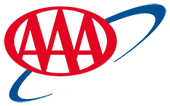
Have you ever wondered exactly how your home can stay so perfectly cooled and heated? A typical HVAC system consists of generally the same parts and the same concepts. Understanding your HVAC system’s parts and functions will help you diagnose a problem when your home no longer remains perfectly cooled or heated.
Keep reading to learn everything you need to know about the parts of an HVAC system and how the HVAC system works.
What Is an HVAC System?
An HVAC system is a system that both heats and cools your indoor air. HVAC stands for heating, ventilation, air conditioning, and cooling. The system is responsible for full climate control in your home including the temperature, air pressure, and humidity.
Several pieces of equipment fall under the HVAC label including heat pumps, furnaces, air conditioners, air handlers, ventilation lines, ductwork, filters, and any other equipment that affects air quality.
HVAC System Parts
HVAC components consist of all the mechanical parts that create your conditioned air. They include the following main pieces:
- Air filters
- Exhaust outlets
- Air return setup
- Electronic heating elements
- Compressors
- Coil
- Blowers
Some more sophisticated units could include computers and motherboards. These are the main mechanical pieces that you need to keep an eye on when conducting HVAC maintenance.
How Does an HVAC System Work?
The HVAC system runs on some pretty simple principles. Here are the basic principles.
First, every room has an air return setup that acts as both the exit and entry of the ventilation cycle. The exhaust fan sucks air from outside the room into the room. Then the fan pushes the inside air outside the room.
Second, air goes through filters to remove bacterial matter and dust. These filters play a key role in keeping your HVAC system functioning properly.
Third, the air passes through either the heating component which heats the air on cold days or it passes through the cold air components to cool it on hot days. Your thermostat will sense the temperature of the air and then trigger your HVAC system to either cool or heat the air.
Heating
The heating function of an HVAC setup typically uses electronic heating elements. These elements consist of an induction coil, thermostats, and an electronic heater. Generally speaking, the heating elements create a heated space that the air passes through.
When the air passes through the heated space, it warms up. Then the fan pumps the warmed air back into your room.
Cooling
With air cooling, the air goes through a coil that is a part of your heat exchanger. The exchanger unit will have refrigerant in it. This refrigerant takes the heat from the air and then pumps cooled air into your room.
After the air has gone through its conditioning process, an industrial blower fan will pump it into the rooms. Once the air temperature has reached the desired temperature, the thermostat will sense the change and turn the heater or air conditioning off.
Maintain Your HVAC Regularly
To maximize all of the components of your HVAC system, take time to maintain the system annually. Call in an HVAC specialist to look at and evaluate your blowers, heating elements, coils, and other parts.
Are you on the hunt for an HVAC repair and installation service? If so, contact us. We are your local HVAC experts and can make sure your system is doing its job perfectly.








